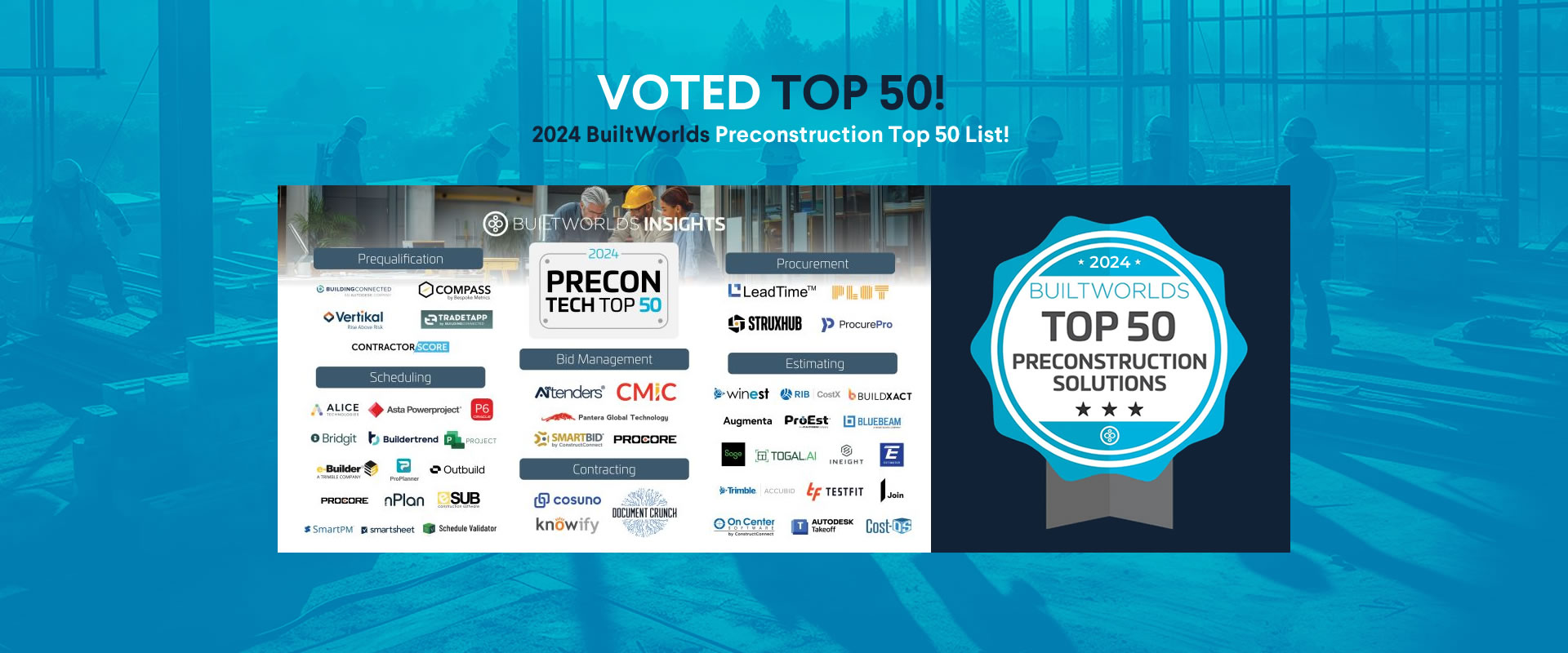Top 12 Ways AI-Based Digital Construction Management Systems Optimize Resource Allocation for Superintendents
Table of Contents:
In the dynamic world of construction, the role of a superintendent is pivotal. Charged with the responsibility of overseeing every aspect of a project, from planning to execution, superintendents are the linchpins of construction sites. In recent years, AI-based digital construction management systems have emerged as indispensable tools for these professionals. These systems, leveraging the power of artificial intelligence, are transforming how resources are allocated and managed, ensuring projects are completed efficiently, on time, and within budget.

AI technology in construction is much more than a digital convenience; it’s a revolutionary force. It brings a level of precision and efficiency previously unattainable, driving the industry towards an era of digital sophistication. For superintendents, this means an unprecedented ability to make informed decisions, streamline operations, and maximize the use of every resource available. From predictive analytics that forecast resource needs to real-time inventory tracking, AI systems are redefining the norms of construction management.
But what exactly are these AI-based systems capable of? How do they optimize resource allocation in ways that were once deemed impossible? Let’s delve into the top 12 ways these digital systems are enhancing the resource management capabilities of construction superintendents.
1. Predictive Analytics for Resource Forecasting
Imagine a system that not only understands your current project needs but can also predict future requirements with remarkable accuracy. AI-based predictive analytics does just that. By analyzing vast amounts of data from past and ongoing projects, these systems forecast the resources needed in the future. This forward-looking approach enables superintendents to plan more effectively, ensuring resources are allocated efficiently throughout the project’s lifecycle. This predictive power mitigates the risks of resource shortages or excesses, which can lead to cost overruns or delays.
2. Real-Time Inventory Tracking
In construction, having the right materials at the right time is critical. AI-driven real-time inventory tracking systems provide an eagle-eye view of all materials, tools, and equipment. This continuous monitoring helps superintendents maintain optimal inventory levels, reducing instances of overstocking or stockouts. Such precise tracking ensures that projects don’t face unexpected pauses due to material shortages, leading to smoother project execution.
3. Automated Scheduling and Task Allocation
The complexity of managing a construction workforce is well-known. AI simplifies this by automating scheduling and task allocation. These systems assess the workforce’s skills, availability, and other project parameters to assign tasks efficiently. This optimization ensures that the right people are working on the right tasks at the right time, maximizing productivity and minimizing idle time or workforce burnout.
4. Enhanced Decision Making with Data Insights
Decision-making in construction can be daunting, given the multitude of factors involved. AI-based systems provide superintendents with actionable data insights, empowering them to make informed decisions. These insights cover various project aspects like resource utilization rates, productivity levels, and potential bottlenecks. Armed with this information, superintendents can allocate resources more strategically, enhancing overall project efficiency.
5. Efficient Use of Machinery and Equipment
Machinery and equipment represent significant investments in any construction project. AI optimizes their usage by analyzing patterns and predicting the best deployment strategies. This approach not only reduces wear and tear but also ensures machinery is used efficiently, avoiding situations where expensive equipment lies idle or is underutilized.
6. Labor Optimization
The AI systems are adept at determining the optimal number of workers required for various tasks, taking into account factors like skill levels, project timelines, and labor costs. This precision in labor allocation helps in reducing unnecessary labor expenses while ensuring that the project doesn’t suffer from manpower shortages.
7. Predictive Maintenance of Tools and Equipment
Unexpected equipment breakdowns can cause significant project delays. AI’s predictive maintenance capability forecasts when tools and equipment will likely need servicing. This foresight allows superintendents to schedule maintenance activities proactively, minimizing downtime and extending the life of the equipment.
8. Integration with Supply Chain
Seamless integration with the supply chain is another area where AI excels. By synchronizing with suppliers’ systems, AI-based management tools ensure that materials are ordered, delivered, and replenished just in time. This integration reduces the need for large storage spaces and minimizes the risk of material wastage due to spoilage or obsolescence.
9. Energy and Utility Management
AI systems offer robust tools for monitoring and optimizing the use of utilities on construction sites. These systems track energy consumption patterns and suggest ways to reduce wastage, leading to cost savings and a smaller environmental footprint. Efficient utility management is especially crucial in large-scale projects where the costs and environmental impact of utilities can be significant.
10. Risk Management and Mitigation
In the construction industry, risk is a constant companion. AI systems excel in identifying and assessing potential risks, whether they are related to resource allocation, safety, or project timelines. By providing superintendents with early warnings and mitigation strategies, these systems play a crucial role in keeping projects on track.

StruxHub
Discover how StruxHub can revolutionize your construction management. Contact us today!
11. Communication and Collaboration Enhancement
Effective communication and collaboration are the backbones of successful construction projects. AI-enhanced systems facilitate seamless communication among team members, stakeholders, and suppliers. This improved collaboration ensures that everyone is aligned, and resources are used as efficiently as possible.
12. Continuous Learning and Improvement
One of the most significant advantages of AI is its ability to learn and improve over time. These systems analyze data from each project, identifying successful strategies and areas for improvement. This continuous learning loop enables superintendents to refine their resource allocation strategies continually, leading to better outcomes in future projects.
In conclusion, AI-based digital construction management systems are not just tools; they are partners in success for construction superintendents. By optimizing resource allocation in these 12 ways, these systems are ushering in a new era of efficiency, precision, and success in the construction industry.
StruxHub is a construction project management software that helps you manage projects from start to finish. It offers features like task management, document management, and communication tools. StruxHub can help you save time and money, improve communication, collaboration, and decision-making.
To learn more about how StruxHub can streamline your construction management processes, request a demo today. By completing our form, you’ll hear from our team soon to discuss how StruxHub can help you:
- Schedule construction material deliveries with your trades
- Coordinate construction site resources and on-site logistics
- Digitize work permits and inspection forms
- Communicate and track P6 and Excel schedules
- Broadcast announcements to all construction workers
Don’t miss out on the opportunity to optimize your construction management processes with StruxHub. Sign up for a free demo today.



